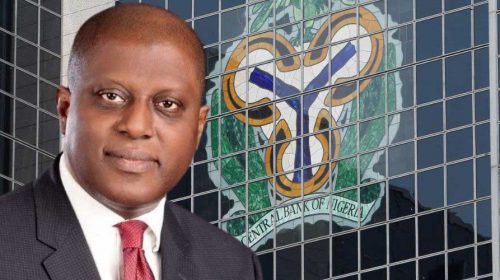Four Nigerian Banks in distress ….. MPC
By NGOZI Onyeakusi

Two members of the Central Bank of Nigeria’s (CBN) Monetary Policy Committee (MPC): Dr. Doyin Salami and Prof. Balami Dahiru Hassan have raised alarm that four un-named Nigerian banks are currently trading with too many non-performing loans on their books and with liquidity ratios below the minimum requirement.
Their statements were part of those of eight members of the MPC published in CBN website late on Tuesday.
According to Hassan , financial sector stress tests showed that the Capital Adequacy Ratios for the nation’s banking industry worsened to 11.51 per cent in June, from 12.81 per cent in April, as against a regulatory minimum of 15 per cent for banks with international licences.
He said, “The financial performance indicators showed that when the four outlier banks were removed, the CAR, NPLs ratio and the Liquidity Ratio are all above the prudential requirement.
“The banking sector liquidity ratio showed that all DMBs registered above the minimum of 30 per cent Liquidity Ratio with the exception of four outlier banks. The stress test, therefore, shows that the Deposit Money Banks are less resilient to shocks.”
Hassan stated that the NPLs stood at 15.07 per cent in June compared with the five per cent regulatory limit.
Salami, in his contribution during the meeting, expressed concern that “Four Outlier Banks” had NPLs of slightly over 15 per cent, which exceed the regulatory limit and continue to rise.
The regulatory threshold for banks is 5 per cent. Nigerian Deposit Money Banks (DMBs) are also expected to maintain a Capital Adequacy Ratio (CAR) of 10-15 per cent, depending on the size of the bank.
Systemically Important Banks (SIBs) are required to maintain a CAR of 15 per cent, while smaller banks are required to have a CAR of 10 per cent.
Salami referred to a Financial System Stability Report by the CBN that had highlighted “one of the biggest challenges with which the central bank must grapple”, saying that at slightly over 15 per cent, the portfolio of NPLs as a proportion of the total loan books of the four banks was above the regulatory maximum and continues to rise.
“Whilst Bank Staff continue to note that once the figure is discounted for the impact of ‘Four Outlier Banks’, the NPL ratio drops to 8.17 per cent. In another set of circumstances, I may be tempted to suspend my judgment and support their position.
“However, I note that these ‘Four Outlier Banks’ cumulate in size to at least one Systemically Important Bank (SIB).
“I take the view that since the failure of any of the SIBs is a source of concern; excluding these ‘Four Outlier Banks’ does not adequately take cognisance of the contagion effect which they could trigger,” Salami opined.
He noted that perhaps the most challenging of the present characteristics of the economy in Nigeria was the adoption of a quantitative easing (QE) stance by the management of the Central Bank.
Salami said the CBN’s claims on federal government at N814 billion was twentyfold higher, while the claims of commercial banks rose marginally by 0.4 per cent to N4.6 trillion; 30 per cent increase to N454 billion in CBN’s purchase of government treasury bills; five per cent increase in federal government’s overdrafts to N2.8 trillion; and an increase in the mirror account from N3 billion at the end of 2016 to N1.5 trillion in April 2017.






Leave a Reply